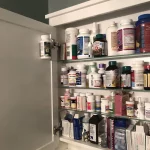6 Tips for Selecting the Right Biosafety Cabinet for Your Lab

Picture Credit: Pexels
In the world of scientific research, laboratories are hubs of innovation and discovery. They are places where breakthroughs happen, where the boundaries of knowledge are continually pushed.
According to the Global BioLabs Report 2023, there are 51 biosafety level-4 (BSL-4) labs distributed across 27 countries worldwide. However, within these hallowed halls of scientific progress, there is often a delicate dance between scientific exploration and the imperative to protect both the researchers and the broader environment from potential hazards. Biosafety cabinets, or BSCs, play a pivotal role in this intricate balance.
These cabinets are the unsung heroes of laboratory safety, providing controlled environments where the manipulation of hazardous materials, biological agents, and delicate scientific procedures can take place with the utmost precaution. Choosing the right biosafety cabinet is not just a matter of convenience. It’s a fundamental decision that impacts the safety of laboratory personnel and the integrity of scientific experiments.
In this blog post, we’ll delve into six essential tips to help you navigate the process of selecting the perfect biosafety cabinet for your lab, ensuring that both your research and safety standards reach new heights.
Assess Your Laboratory Needs
Assessing your laboratory’s needs is a critical initial step when choosing a biosafety cabinet, especially in the context of specialized equipment like a single cell sorter used to separate individual cells from a heterogeneous mixture of cells. This evaluation thoroughly analyzes several factors that directly impact laboratory safety and efficiency. Start by contemplating the materials you’ll be handling, the associated risks, and your laboratory’s unique work processes. This assessment is instrumental in determining the most suitable BSC class and type for your operations.
For instance, if your lab is involved in handling cytotoxic drugs, opting for a Class II Type B2 biosafety cabinet is often the optimal choice. These cabinets are uniquely designed to provide both chemical and biological safety, an important consideration when dealing with hazardous pharmaceuticals like cytotoxic drugs or engaging in delicate procedures such as a single cell sorter. Matching your biosafety cabinet to your laboratory’s precise needs is a fundamental step in ensuring both safety and operational efficiency.
Understand the Types of Biosafety Cabinets
Biosafety cabinets come in various classes and varieties, each tailored for specific applications and levels of protection. There are three primary classes: Class I, II, and III with Class II cabinets being the most frequently found in laboratories. Within Class II cabinets themselves there are three subtypes (Type A1, Type A2, and Type B2). To select an effective BSC, it’s important to understand its various aspects and select one that suits your unique requirements.
- Class I BSCs: Protect the operator but not the environment. They are suitable for work with low to moderate-risk agents.
- Class II BSCs: Offer protection to the operator, the environment, and the product. They are classified into Type A1, Type A2, and Type B2, each with different airflow patterns and applications.
- Class III BSCs: These are enclosed and gas-tight, providing the highest level of protection. They are used for handling highly infectious materials.
Determine the Required Airflow
The airflow within a biosafety cabinet is crucial for ensuring containment. Proper airflow protects the operator, the experiment, and the environment by directing potentially contaminated air away from the operator’s breathing zone and into the cabinet’s exhaust system. Understanding the required airflow is essential in selecting the right BSC.
For example, Class II Type A2 cabinets are suitable for working with volatile chemicals, while Class II Type B2 cabinets are better for biological and chemical safety.
Consider the Size and Configuration
Biosafety cabinets come in various sizes and configurations, and your choice should depend on your laboratory space and workflow requirements. Smaller BSCs may be suitable for limited workspace, while larger ones offer more working area and storage. The configuration of the cabinet, such as the number of access points and the location of electrical outlets, should also align with your laboratory setup.
Evaluate Safety Features
Safety features are an important aspect of biosafety cabinets. Ensure that the BSC you choose has the necessary safety features to protect laboratory personnel. These may include:
- Alarm systems to alert users to issues with airflow or filter conditions.
- HEPA filters to trap airborne particles.
- A protective sash or window to maintain a barrier between the operator and the work surface.
- UV lights for decontamination between experiments.
Review Maintenance and Certification
Maintaining your biosafety cabinet is not just a routine task; it’s an indispensable part of laboratory safety. Regular maintenance and certification guarantee that your biosafety cabinet operates as intended, preserving safety and containment standards. When selecting a BSC, consider suppliers or manufacturers that offer comprehensive maintenance programs and certification services. These programs often include regular inspections, filter replacements, and thorough testing to ensure the cabinet’s performance remains optimal.
Timely maintenance not only extends the lifespan of your biosafety cabinet but also minimizes the risk of malfunction. An out-of-order BSC can compromise the safety of your lab personnel and the integrity of your experiments. Moreover, certification services help verify that your cabinet meets the necessary safety standards, giving you peace of mind that your equipment is up to code and your lab complies with regulations. In essence, investing in maintenance and certification is an investment in laboratory safety and operational efficiency.
In Closing
Selecting a biosafety cabinet for your laboratory requires careful consideration of its unique requirements, the type of work being conducted, and required safety features. By understanding the different types of biosafety cabinets available and their features such as airflow requirements, you can make an informed decision that ensures both laboratory personnel and experiment integrity are safe from harm.
Investing time and effort in selecting the right biosafety cabinet is an essential part of maintaining a safe and productive laboratory environment.





